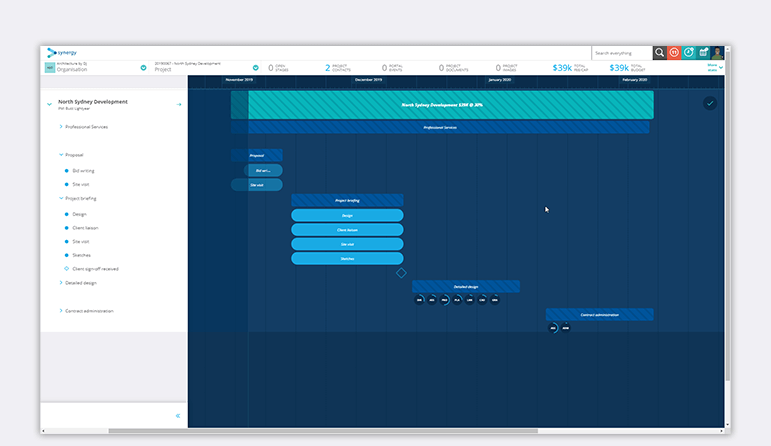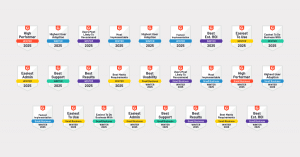As part of the October product update in 2018, we introduced a Gantt-style, drag and drop, chart to our forecasting and resourcing module. We call it the project schedule, and it’s pretty neat. Anyway, it just got neater.
Tasks
In the November release we’ve added tasks to the project schedule. You can now expand below a stage to see tasks AND you can set the start and end dates of those tasks under this stage.
This takes the project program from stage level to scheduling at a task level. What’s the difference to you? Good question. You’re now able to say who’s doing what at any given time during the stage. Your planning can become much more detailed.
Milestones
We also added milestones. You can think of milestones as target date, or actual markings on the road of a project — where tasks happen over a duration of time, milestones are something you reach, and they tend to be important dates or important points in the schedule.
Milestones will be things like, “received order from the client” — because that is a milestone that kicks the project work off. You might have other milestone dates like “80 percent design review” — because you’ll have some kind of meeting at the point at which you’re 80 percent through your detailed design. A milestone to “submit design to council” would be another example — due by a particular day.
The benefit of the milestones is that you can then report on those separately. Because they’re the key project dates, we’ve given you a rather nice report (even if we do say so ourselves).
On the screen, you can see all of the milestones for your project. It shows you how much time you’ve got — showing the current date, and then counting down the days until it’s due for you. If it’s overdue, it turns red and tells you how many days you’re late.
This all makes it very clear what and when the agreed milestones are, and whether you’re hitting them or not. That’s good for a project manager, but it’s also great for the next level of management up. Senior managers can run a report across all of the milestones, across all of the projects and say, for instance, “show me the milestones that are more than a week late” — because obviously, these are issues that you’ll want to go and talk to somebody about.
Templates
So, tasks and milestones are a nice way to be able to add more granularity to the way you’re managing your projects. We’ve also added all of that into the project templates. That means that when you create a project now, you can set it up like a fully planned project from the template. That means all of those key milestones are already scheduled automatically in the new project — makes it very easy to set up quickly, very easy to adjust, and very easy to kick off with a very detailed plan.
We’re really excited about this release. In and of itself, but also because of the updates it’s going to enable in the near-ish future. But that’s all I’ll say about that. Keep watching this space!
Recommended reading
- Forecasting and resourcing — right people, right project, bright future
- Skill and (avail)ability — resource planning of staff in a built environment design business
- What the bleep is EVM? And why do I care? — Managing AEC project performance


